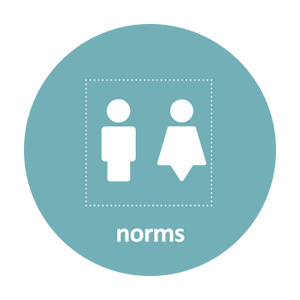
TIPS FOR MEASURING RELATIONS AND LAWS & POLICIES
- Use power mapping or analysis tools to understand relations in multiple relevant spheres: e.g. relations between partners/spouses or between parents and children in the family, relations between peers, and between girls and boys, as well as relations at the community level, and relations with private and public authorities and/or service provides (in market or state arena).
- Use qualitative research to understand the quality of relations, including positive features (equity, trust, reciprocity, support), and a reduction of negative features (reduced levels of conflicts and threats of violence)
Illustrative Indicators
FINANCIAL SERVICES FOR THE POOR
OUTCOMES
<p>1.2. Improved quality of communication in couples on financial decisions</p>
INDICATORS
1.2.1. % of women who report having discussed financial decisions with their spouse at least once in the past month
1.2.2. Degree of satisfaction on inter-spousal communication reported by women
WATER, SANITATION AND HYGIENE
OUTCOMES
<p>2.2. Improved identification of diverse sanitation needs of beneficiary groups and relevant barriers to accessing sanitation resources</p>
INDICATORS
2.2.1. % women who report having discussed the allocation of responsibilities for operation and maintenance of WSH facilities in the home, with their spouse
2.2.2. % women (out of those employed in the WSH sector) who report having a say in their job attributes and career


